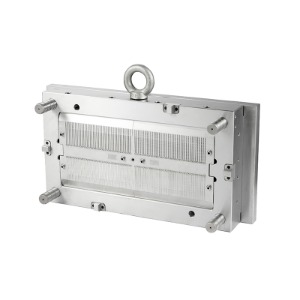 2025.05.09
2025.05.09
 News
News
Cable ties are an essential tool in various industries, from electronics and construction to automotive and telecommunications. These simple yet versatile fasteners help to organize and secure wires and cables, making them a crucial component in maintaining neat, safe, and efficient environments. However, to produce high-quality and durable cable ties, manufacturers rely on specific moulds designed for mass production. The cable tie mould plays a pivotal role in shaping the plastic material into the final product.

Injection Mould for Cable Ties
The common and widely used mould for manufacturing cable ties is the injection mould. This mould is specifically designed for the injection moulding process, where plastic material is heated until it becomes molten and then injected into the mould cavity under high pressure. The mould itself is typically made of durable steel or aluminum to withstand the intense heat and pressure during production.
Injection moulds for cable ties are available in various configurations, depending on the design and size of the tie. Some moulds are designed to produce a single cable tie at a time, while others can produce multiple cable ties simultaneously, increasing production efficiency. The cavity design, along with cooling systems within the mould, ensures that the cable ties harden properly once the molten plastic is injected, resulting in a high-quality, finished product.
Multi-Cavity Cable Tie Moulds
In large-scale production settings, manufacturers often turn to multi-cavity moulds to produce several cable ties in one cycle. These moulds are designed with multiple cavities, each capable of forming a separate cable tie. By using multi-cavity moulds, manufacturers can significantly increase the production rate, meeting the high demand for cable ties in various industries.
Multi-cavity cable tie moulds come in different configurations, such as two-cavity, four-cavity, and even eight-cavity moulds. The number of cavities in a mould is usually determined by the size of the cable ties being produced and the production capacity required. These moulds are often equipped with advanced cooling systems to ensure that the plastic material solidifies uniformly across all cavities, reduce the risk of defects.
Hot Runner Cable Tie Moulds
Hot runner moulds are another advanced type of cable tie mould used in high-precision injection moulding. In a hot runner system, the plastic material remains molten as it travels through the runners, ensuring a continuous flow of material into the cavities. This eliminates the need for cold runners (where plastic material solidifies in the runner channels), resulting in less waste and more efficient production.
Hot runner cable tie moulds are particularly beneficial when producing high volumes of cable ties in a consistent, high-quality manner. The hot runner system maintains precise control over the temperature of the plastic material, ensuring that each cable tie is produced with the correct shape and dimension. Furthermore, because the system minimizes material waste, manufacturers can achieve cost savings in terms of raw materials.
Automated Cable Tie Moulds
Automation is becoming increasingly important in modern manufacturing, and cable tie moulds are no exception. Automated moulds are designed to integrate seamlessly with robotic systems, allowing for faster and more efficient production with minimal human intervention. These automated moulds are typically equipped with robotic arms that can remove finished cable ties from the mould and place them on a conveyor belt for packaging.
Automated cable tie moulds are ideal for manufacturers who need to produce large quantities of cable ties in a short amount of time. The automated systems can also monitor the quality of the finished products, ensuring that any defects or issues are identified and addressed immediately. This reduces the risk of defective products reaching the market and improves the overall efficiency of the manufacturing process.